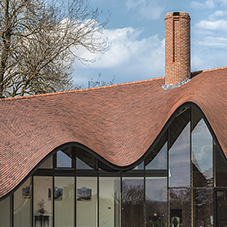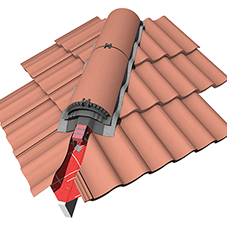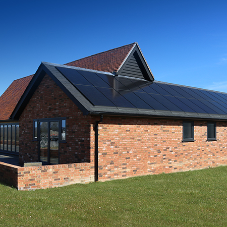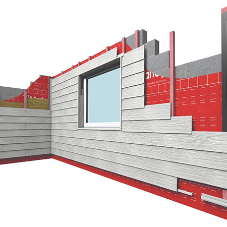A blog written by Marley
The launch of the fully revised British Standard, BS 5250, aims to address all sources of moisture within buildings and the associated impacts to the building fabric and occupants’ health by preventing them from becoming breeding grounds for health hazards such as mould spores and spreading infections, according to roof systems manufacturer Marley.
It is advising contractors to check the new guidance, which includes some important clarifications for pitched roof ventilation.
BS 5250:2021 replaces BS 5250:2011 + A1 2016 and gives new guidance on preventing moisture risk in buildings, including pitched roofs. The revised Standard was launched on 29 July and has been re-named ‘Management of Moisture in Buildings – Code of Practice’ to reflect its new, integrated whole building approach, with roof ventilation playing an important role.
While former editions of the Standard focussed mainly on condensation, the new guidance has been broadened to include other moisture problems such as excessive humidity, rising damp, rain penetration and roof leaks. It also recognises that, in both new and existing buildings, the gap between the design on paper and the way it performs when it is built and in use may vary significantly, particularly due to modern building methods and climate change.
The revised Standard represents best practice in terms of assessing, controlling, and preventing the risk of moisture in buildings, giving both design and practical recommendations.
Stuart Nicholson, roof systems director at Marley, explains: “The changes that are introduced in BS 5250 recognise the fact that buildings are coming under increasing stress from excess moisture, not only from climate change, with increasingly high rainfall and flooding risk, but also due to improved energy efficiency, causing greater humidity in buildings.
“We have been advising about the risks associated with moisture and the importance of adequate ventilation for many years now. The revised BS 5250 is an important step forward because it adopts a whole building approach to reducing the risk of excess moisture. Pitched roofing has a critical role to play in this integrated guidance and in the revised Standard, roofs are covered in greater depth than before and the different moisture risks between roof types are explained in detail. Importantly, it shows that roof ventilation should not be seen as an add on but as an important part of the whole building approach to managing moisture. This will help to prevent damage to buildings from different types of excess moisture and reduce the harmful risk to occupants’ health from inadequate ventilation levels.”
When installing pitched roofing, the natural movement of air within a building means there is a permanent risk of moisture laden air in the form of vapour, likely to ascend to the roof space. It is almost impossible to create an air-tight envelope, so contractors must provide minimum levels of ventilation to the roof void, even if they are using breathable underlays.
When it comes to managing moisture in pitched roofs, much of the guidance from the previous BS 5250:2016 still applies. However, there are some changes in the revised Standard, including:
- Clearer advice on the use of high resistance and low resistance underlays, as well as air and vapour control layers, when used with air permeable and air impermeable roof coverings.
- New guidance on the calculation methods for assessing moisture risk in roofs in the form of a table relevant for ‘as designed in theory’ (ADT) and ‘as-built in service’ (ABS) conditions for various pitched, flat, and composite roof types.
- Designers and installers are alerted to minimise the risk of surface condensation on the ceiling of any occupied spaces by ensuring thermal insulation is continuous and thermal bridging at roof / wall junctions and around openings is minimised.
- Design considerations should now take account of internal finishes and ceilings, particularly the importance of maintaining air tightness to prevent the transfer of moist air into colder roof voids.
- More focus on the importance of sealing openings in roofs and minimising thermal bridging at the eaves.
Stuart Nicholson adds: “It is important that roofing contractors are aware of these changes to the BS 5250 standard and make sure they are following the latest guidance for whatever stage of the pitched roof design and installation they become involved. If in doubt, they can contact our technical team who can provide advice and full roof system specifications to ensure correct ventilation levels and reduce moisture risk.”






